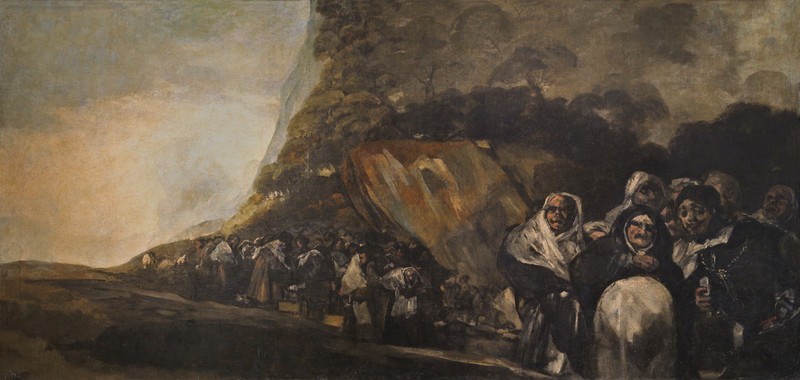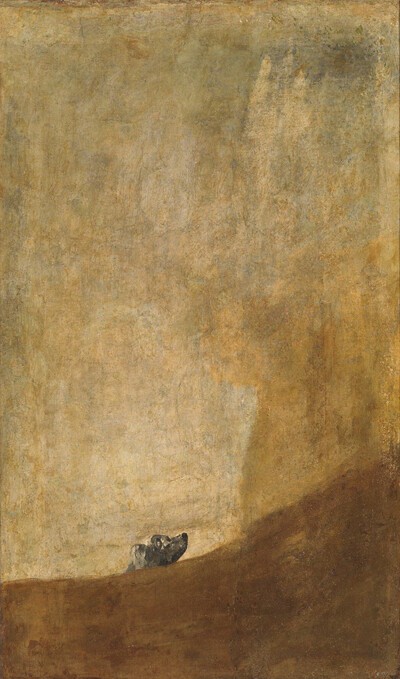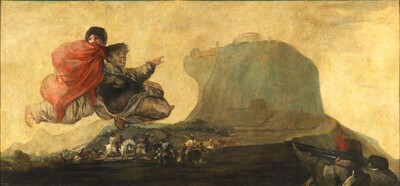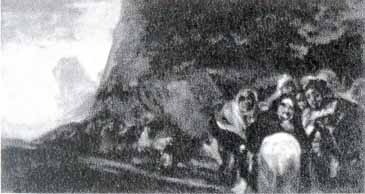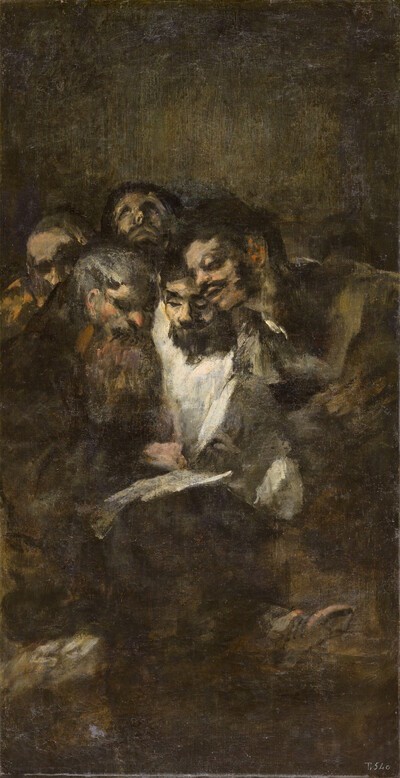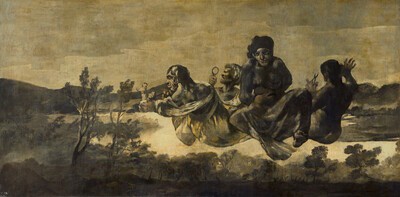- Cronología
- Ca. 1820 - 1823
- Ubicación
- The Prado National Museum. Madrid, Madrid, Spain
- Dimensiones
- 127 x 266 cm
- Técnica y soporte
- Oil painting on plaster transferred to canvas
- Reconocimiento de la autoría de Goya
- Undisputed work
- Titular
- El Prado National Museum
- Ficha: realización/revisión
- 28 Oct 2010 / 13 Nov 2023
- Inventario
- (P00755)
SeeLeocadia.
This painting was located on the first floor of the house known as the Quinta del Sordo on the long right-hand wall next to Asmodeus (Asmodea). The figures depicted were superimposed on the landscape.
Of the group of figures in the foreground on the right, there is a one that stands out from the rest, dressed in black in the fashion of the 17th-century. This man has been identified as an inquisitor, dressed in golilla collar, necklace and a sword, and carrying a roll of paper in his hand. In this case, the figure next to him could be a friar. The rest of the group are old women whose clothing is reminiscent of the old celestinas or procuresses portrayed by the artist in other works. In line with this theory, the group behind these figures would be the credulous and ignorant people who attended a pilgrimage in order to take the miraculous holy waters from the Well of San Isidro, encouraged by the Holy Office (Inquisition).
The artistic rendering of the vegetation and background in the distance is interesting, and typical of Goya's landscapes. Once again, the artist has used contrasts of light and shade: the corner where the main characters are found is in almost complete darkness while the opposite corner is full of light.
-
Pinturas Negras en la Exposición Universal de ParísPalacio del TrocaderoParís1878from may 20th to November 10th 1878
-
Goya. 250 AniversarioMuseo Nacional del PradoMadrid1996consultant editor Juan J. Luna. From March 29th to June 2nd 1996cat. 160
-
Vie et ouvre de Francisco de GoyaParísOffice du livre1970pp. 327-329, cat. 1619
-
BarcelonaPolígrafa1970vol. I, p.380, cat. 713
-
Goya's Black Paintings: Truth and Reason in Light and LibertyNew YorkHispanic Society of America1984p.115-122
-
Goya, de lo Bello a lo SublimeInstituto de Estudios Iconográficos1990
-
Goya. 250 AniversarioMadridMuseo del Prado1996p.429
-
Las pinturas negras de Goya, AlcobendasT.F. Editores1997p. 83-84
-
Las Pinturas Negras de GoyaLondonScala Publishers Ltd.2003p.74
